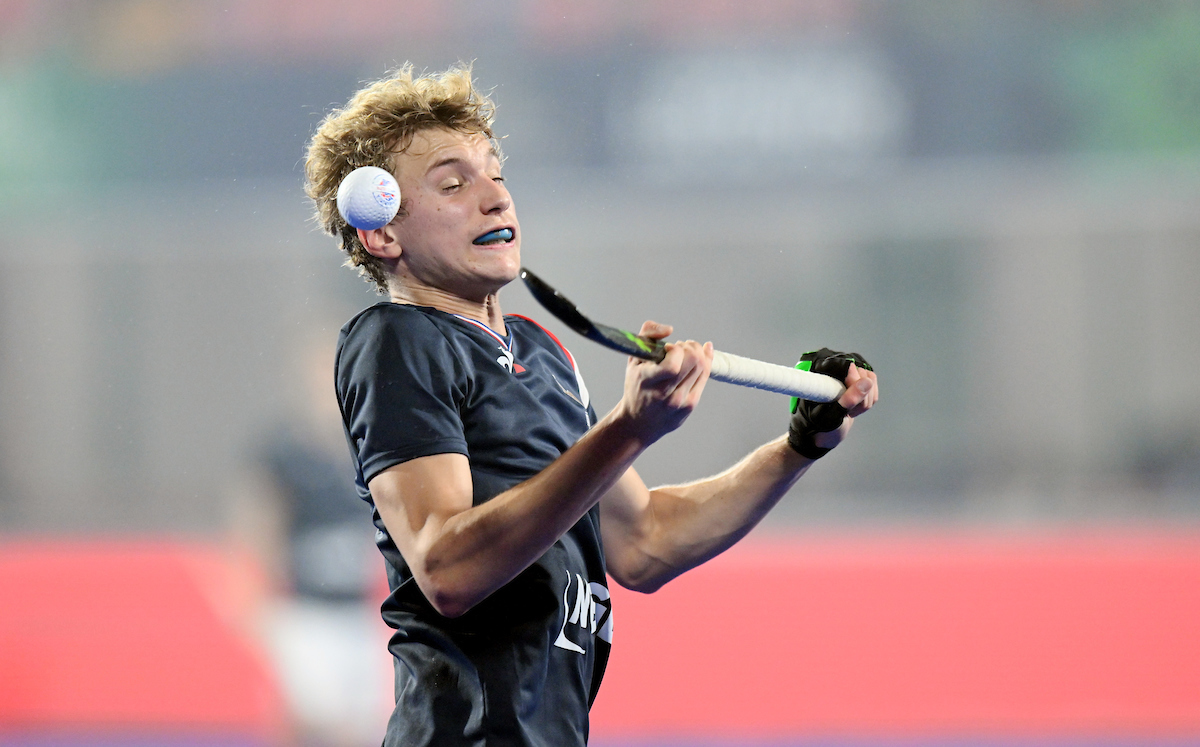Hockey has done a great job of moving on from its old-fashioned 20th century rules.
What was deemed “dangerous” — the ball being raised above the knee no matter what — has been put by the wayside. A ball that has been raised above knee height is not “dangerous” unless it strikes a player above the knee or players must move so not to be struck by the ball.
Dangerous must genuinely be “dangerous” is now consistently interpreted.
Continue reading...

Unlock our ad-free, premium content and get use of our subscriber-only app. Use coupon 3FOR1 to get 3 months for only £1!
Already a subscriber to our website? Login
Peter D’Cruz is the founder of the Hockey Curriculum for Players & Coaches





Peter,
The aerial ball is dangerous, full stop.
It might be acceptable at International Level, but it is not at lower and younger levels.
All Hockey should be played on the Ground.
Even then it is dangerous.
The Penalty Corner should also be removed, it is so dangerous.
I am willing to discuss and provide alternate ideas.
It looks like you want to go back to the dark ages
Victor,
The aerial ball at youth and lower hockey levels needs to be umpired properly but coaches are equally responsible in ensuring that their players only use these skills after they cane correctly perform them in practice settings.
I do agree about the danger of the PC and have written three articles on the subject.
https://www.thehockeypaper.co.uk/articles/2022/01/06/talking-hockey-a-safe-change-to-the-free-hit-rule-for-the-better
https://www.thehockeypaper.co.uk/articles/2023/01/04/heres-to-a-much-safer-indoor-hockey-penalty-corner
https://www.thehockeypaper.co.uk/articles/2023/06/06/back-to-the-future-for-hockeys-penalty-corner
An incorrect link above. This is the one about how to conduct a safe PC, https://www.thehockeypaper.co.uk/articles/2022/01/27/why-we-should-change-the-penalty-corner-in-outdoor-hockey
@Peter D’Cruz, very good article, thanks. I mostly agree, but I wonder what rule needs to be in place to stop 2 players both waving sticks over their heads while contesting a ball?
I very much agree with your opening paragraph “ A ball that has been raised above knee height is not “dangerous” unless it strikes a player above the knee or players must move so not to be struck by the ball. “
Unfortunately that is rarely how games are umpired, particularly in the D. GKs regularly have to endure repeated short corners if a save is in the air, even if there’s no hint of anyone taking evasive action. The umpires seem to apply the test of “whether it might encourage someone to take a dangerous swing at the ball”
Cameron,
Two players waving their sticks should be judged by the umpire as to who is trying to execute the trap because they are in a better position to receive the ball versus the player waving their stick in an act to obstruct or distract the receiver. If umpired correctly, players will figure it out as players want to get on with the game.
On the latter point about the rebound by the GK up in the air, umpires are getting better at judging this at elite and international levels. But there remains the lingering effect from earlier times where umpires automatically called a PC without judging where the ball was landing and there was no danger to anyone, so the issue is umpire education.
However, a crowd of players from both teams in front of the goal is the one exception where umpire discretion must be paramount regarding the potential of a serious or life-threatening injury caused from a player executing a baseball swing into said crowd and which is why almost every umpire calls the PC before someone takes that swing at the ball and almost no player or coach ever objects.
Thanks Peter
Fair enough article, if we think that rules are there to stop us winning, and umpires are there to punish offenders. But not if we understand that the Rules only partly define the skills of the game, and are mostly to protect those skills and the safety of players, and we understand that umpires protect and encourage those skills and safety by simply applying those Rules.
There are Rules like ‘not the back of the stick’, and ‘not the foot or body’, which define the skills of hockey. Then there are Rules to protect skill, which mostly concern stick and body interference, and there are rules to protect safety, not just the catch-all ‘not dangerous’, but also by setting distances and other limits, to be more precise and reliable than leaving it to the umpires’ judgement. Examples of specific safety Rules are: the PC first shot if hit must be below 460mm, lifted above the knee from within 5 is dangerous, etc. A few Rules are to protect both skill AND safety, and this is one of them – giving the receiver 5m space, until the ball is brought down. It dates from 1995, shortly after chip hitting was banned, and players found that a long flick was ok, but the ‘danger’ rule led to ‘lift into a crowd’ being brought back to the lift, which broke the flow and was hardly fair. With the new 1995 Rule, offences at the landing are penalised at the landing, to the benefit of flow and fairness, and skill and safety.
Lifting the aerial is a hard skill, but worth it for the spectacle. Receiving the ball from the air is also a hard skill, which the Rule protects by removing the distraction of an opponent. The Rule also protects safety by keeping sticks clear of bodies, without the umpire having to judge ‘danger’, which is a hard skill for umpires, and inevitably inconsistent. The Rule side-steps all that subjectivity by setting a specific ‘5m’, and ‘on the ground’ that everyone can see the same (mostly!).
Because hockey is seeing more and more aerials, umpires are getting more practice and better at applying the Rule, so players are getting a clearer idea of what is and isn’t on. More aerials connect, and fewer are penalised than used to be, and the game has more spectacle and flow for having this Rule. And aerials are more and more seen at the lower levels of the game, where more and more players are finding that sending and receiving aerials is a skill that they have, and it is ok because of this Rule protecting their skills and safety. What’s not to like?
But it’s ‘old fashioned’, and a pain for defenders, so we get rid. What then? It hands a free rein to opponents to move in and distract the receiver; and for a while we’d have more play stopped for stick-body injuries and mis-traps onto heads, but then so few aerials would work, and so many would simply turn over possession, that the tactic would disappear, and aerials would be just a memory. See: we didn’t need the Rule anyway?
So, if a NED player has the skill to drop an aerial into the D, and his receiver has the skill to pluck ball out of air and slot it past the keeper, and the IND defender knows NED is receiver and cannot be approached, then I’d say the Rule is working spectacularly well. Don’t touch it.
Chris,
The skill of making aerial passes is now finally being used regularly in hockey which is great for more ways to attack successfully.
The matter of discussion is on the “space” to be allowed to make the aerial trap. The problem is the inconsistency on how this 5m space is judged from umpire to umpire and by the same umpire within the game and it is this inconsistency, like in the old business of offside, that is the source of frustration for players and coaches regarding the aerial trap. Umpires advising players not to “infringe” on the 5m space, which should never ever happen, has been caused by the subjectivity of judging what is 5m. If the rule is changed as advocated in the article, players and umpires will do as you write and get better at playing the aerial trap without causing anyone to be injured while no will argue about being within or outside the 5m space which is something umpires will like as much as the players.
Agreed that umpires shouldn’t advise players, neither at landing aerials, nor free hits. In the moment players are so focused on what they’re doing as to barely hear random noises, and even if they did, they’re often committed, and will anyway do what they’re going to do.
As to the rest, I seem to see opponents, at all levels, getting better at leaving the receiver alone, which suggests they do grasp the Rule, which suggests it is applied more consistently than it was. But let’s leave it there.